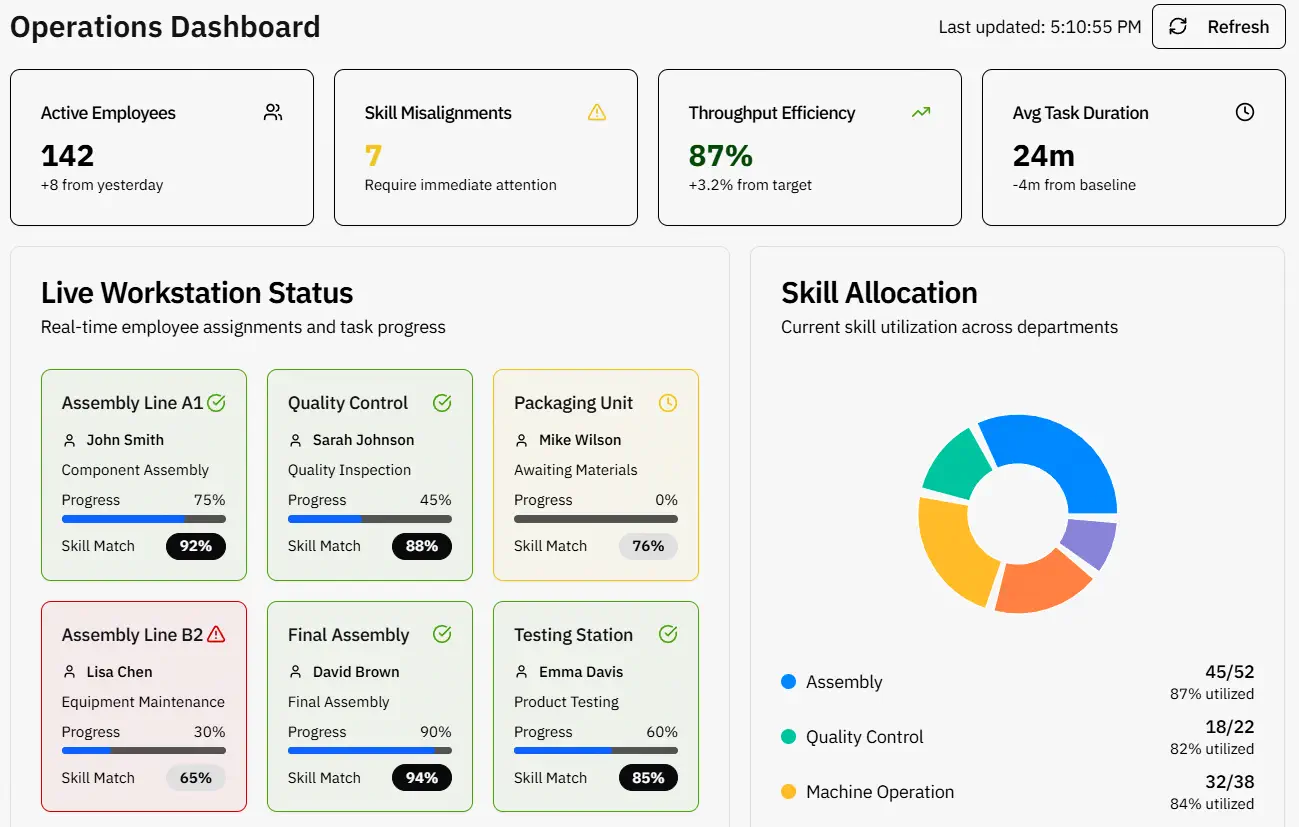Operations Dashboard
AI Analytics
Performance
Rule Creation
Predict employee performance and optimize workforce planning using AI-driven skill matrices. Analyze skills, assess fit, and identify high-potential talent with precision. Improve productivity, reduce turnover, and make data-backed decisions for talent development. By aligning talent with business objectives, this approach enables you to unlock new levels of innovation and efficiency.

Workforce performance directly impacts productivity and operational efficiency in manufacturing and service environments. However, aligning employee skills with tasks while minimizing bottlenecks is challenging using manual allocation methods. Traditional methods often fail to consider the nuanced relationships between employee skills, training effectiveness, and real task performance, leading to inefficiencies.
AI-powered Employee Performance Prediction leverages real-time and historical data from skill matrices and task outcomes to optimize workforce deployment. This enables assigning the right person to the right task at the right time.
An AI-driven system was implemented to predict employee performance by:

Collecting and digitizing skill matrices capturing employees’ certifications, experience levels, and competencies across different machine operations or tasks.

Integrating training data, including completed modules, assessment results, and training recency.

Analyzing historical task completion data, cycle times, quality scores, and rework rates to map performance patterns to skill sets.

Building AI models that predict the expected performance of each employee on specific tasks under current operational conditions.
Industry Reference: Skill matrix-based performance prediction represents the future of data-driven talent management. This AI approach identifies high-potential employees and predicts retention risks beyond traditional reviews. Organizations can reduce turnover by 25% while building more adaptable, competitive teams.
Centralized skill repository updated with live training and certification data.

Uses AI to forecast task performance based on skills, past task efficiency, and quality metrics.

Recommends optimal employee-task pairings to maximize throughput while maintaining quality.

Highlights specific upskilling opportunities based on predicted performance shortfalls.

Organizations implementing AI-based employee performance prediction can realize:

Ensures that tasks are assigned to employees best suited to complete them efficiently.

Predictive allocation minimizes delays by aligning high-skill resources to high-priority or complex tasks.

Increased task completion rates and reduced idle time lead to higher overall productivity.

Identifies skill gaps proactively, focusing training resources where they deliver the most impact.

Shifts workforce management from intuition to a structured, analytics-driven approach.

Aligning roles with employee strengths boosts job satisfaction, reducing turnover and increasing team stability.
Employee Performance Prediction using Skill Matrices transforms workforce management by:
By adopting this AI-powered approach, organizations position themselves for higher efficiency, lower operational costs, and enhanced agility in today’s competitive manufacturing and operational environments.
Tell us about your challenge - we’re here to help.